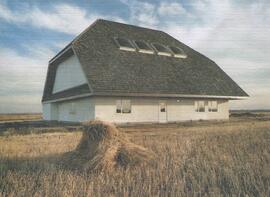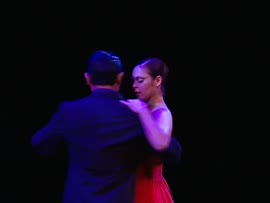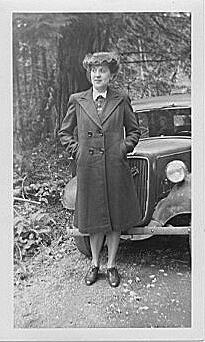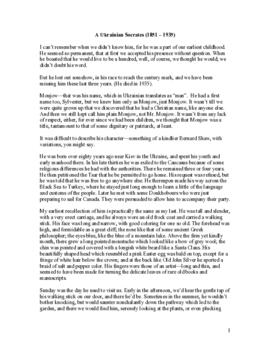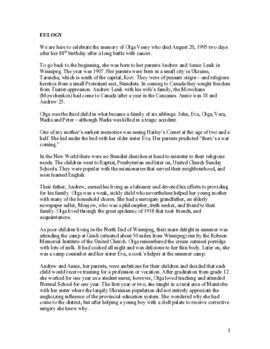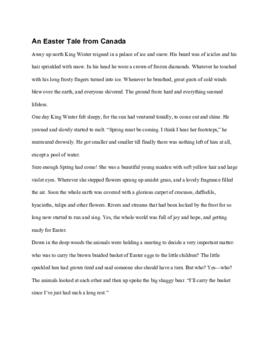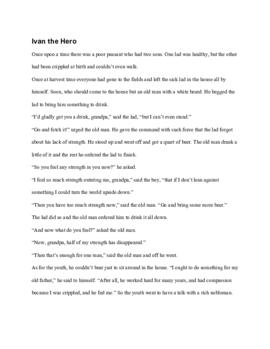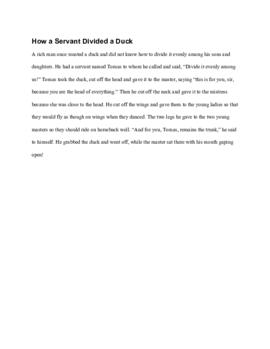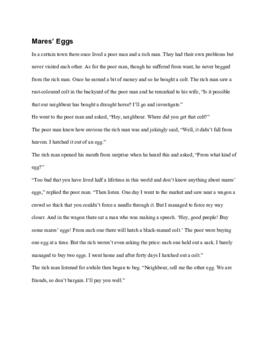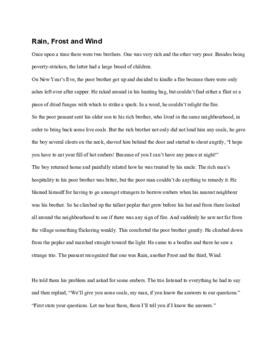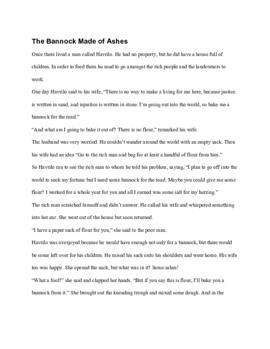Translation of the content:
They don’t use a tree (derevtse) any more [for the wedding], as they did at the beginning. They would cut a piece from a pine tree, the one that has five branches, and it is in the middle, and there are two on the sides. Then either at the bride’s or groom’s house, they start decorating it with greenery. When the groom is heading to the bride’s house, they are bringing the tree with them, and a korovai (wedding braded bread) which was baked and wrapped into something red. So, the best man is carrying the korovai. When they come and sit at the table, they cut the korovai into pieces, and it’s very magnificent. (Here they throw away so much bread…) And they present those pieces of korovai with the tree and the flowers from the tree to the relatives. It’s different here. It’s more delicate here. And there, it’s all relatives, it's poor…
[song]
The tree is standing on the table, and then when the groom is going to the bride’s house, he is bringing his tree, so hers would be moved aside. And then later during propii, when the bride’s mother is going to take off her wreath, then they take the bride’s tree to the groom’s place. So, the bride is still wearing the wreath, and she is waiting for her mother and father and other relatives, and she has curls, as we used to do them above the forehead – one is curling one way, and the other – the other way, … so we would put on gerdans and a wreath, and … And when the mother comes, she takes off all those decorations and gives them to the relatives
The goal of the Local Culture and Diversity on the Prairies project was to document everyday life, ethno-cultural identity and regional variation among people of Ukrainian, French, German and English heritage. How did people from diverse backgrounds interact, adapt and become "prairie Canadians" in the first half of the twentieth century? What was the relationship between cultural inheritance and local community participation? How did they express their various identities on the local community level? The project was designed to generate a great deal of documentary information and primary resources for further research in many aspects of these people's lives.
The collection consists of some 800 hours of audio recordings documenting life in approximately 450 different locations on the Prairies and across Canada prior to 1939, as well as video recordings, photographs, documents, field notes and other material associated with the project.
UntitledThe collection consists of the brochure of the Taste of Ukraine restaurant and the menu. The Taste of Ukraine restaurant was located near Chipman, Alberta. The house was originally built by John Wyrha (1908-1911) near Caliento, MB, approximately 10 miles from Vita, MB, near the US border. The house was purchased by Michael and Evdokia Mushaluk, parents of Mrs. Fedoryshyn and then sold to Stephen Fedoryshyn in 1935. Stephen and Mary Fedoryshyn lived in the house until 1967. They had two daughters: Roslyn who married John Bohonos, and Mrs. Stephen Verchomin, wife of Peter Verchomin.
In the summer of 1979, Henry Panych purchased the house and on Labour Day weekend, he and his brother Fred carefully recorded the layout of the house and tagged every timber and material (except the thatch). With the help of two local people the house was dismantled and loaded on a Doucet Transport high boy and hauled to Chipman, AB.
In 1980 the house was assembled in a new location using original timber. The decayed material was replaced. The unique 12 foot chimney was reconstructed by Jim Serink and the rye straw for the thatched roof was made by John Stanko.
Introduction to the chapter in Collected Papers on Ukrainian Life in Western Canada, edited by V. Polkovsky and M. Soroka, Ostroh Academy National University Press, 2014, Vol. XLVII, Part Seven, pp. 242-275. All rights reserved.
Video performance excerpts from a 2008 live performance of Girl in the Red Dress TANGO. Created for the Ukrainian Shumka Dancers of Canada to an original music score by Andriy Shoost, Kyiv, Ukraine. Girl in the Red Dress TANGO features dancers Jayleen Gordey and Leo Sato with dancers from the Ukrainian Shumka Dancers of Canada.
Video performance excerpts for a contemporary original dance theatre work titled Shumka Remembers, conceived and directed by Gordon Gordey. Video excerpt contains commentary from Gordon Gordey at the Ukrainian Cultural Heritage Village, Alberta, Canada. This dancework was created for The Ukrainian Shumka Dancers of Canada. Shumka Remembers is a contemporary Ukrainian Canadian narrative folk dance theatre work with video exploring the unjust internment of Ukrainian Canadians as “enemy aliens” in Canada during WWI. These “enemy aliens” were subjected to having to carry registration identity papers, often pay monthly registration fees, and were under constant surveillance. Of the 80,000 who were registered under the authority of the Act, 8,579 were deemed: “enemy aliens”. The majority of “enemy aliens” were Ukrainians and were arrested and interned in 26 makeshift encampments located mostly in Canada’s frontier hinterlands. They were forced into hard labour clearing land for roads, building bridges, and building the railway.
Director's comment on the Sumka Remembers Dance - Ukrainian Canadian internment

